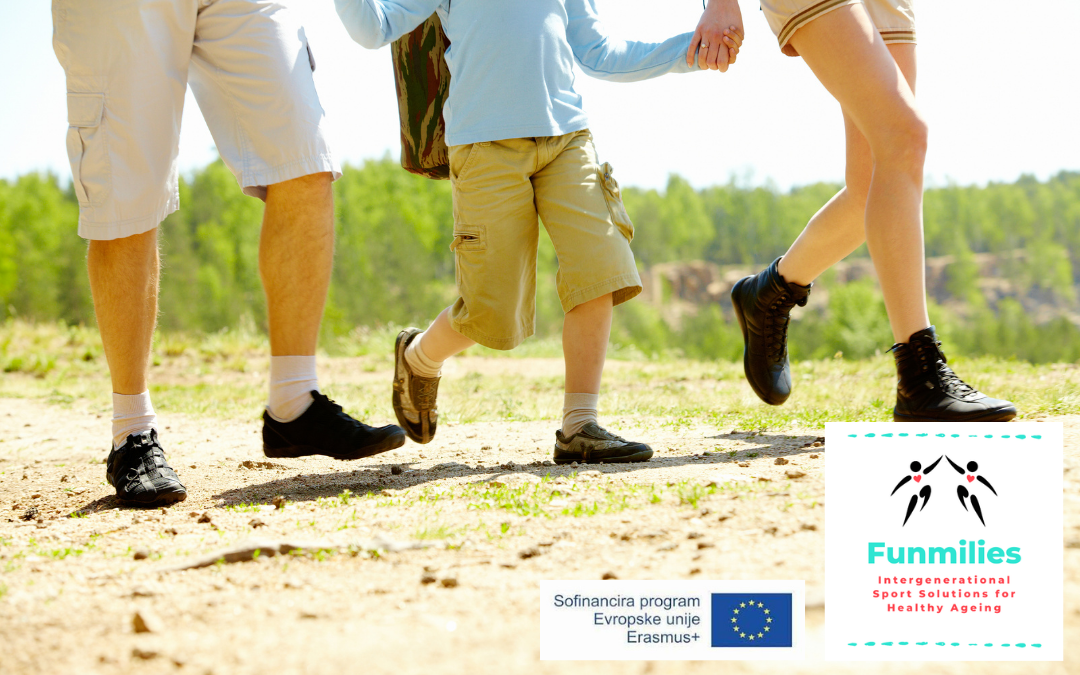Most providers of education for the elderly do not offer sports activities programmes. Slovenian U3A has so far not included such content in its educational programmes. Namely, this would require we also present the theoretical knowledge of the field. The body and its culture were discussed mainly in the programmes of art history, history, sociology, health, etc.
“The body is best understood as a set of potential capabilities realised through various activities regulated by society,” is what we acknowledged but remained at that. This does not mean that Slovenian U3A has completely avoided sport, as some sports activities take place spontaneously in self-organised study groups. Despite some attempts to connect them to the study of written sources and theory, Slovenian U3A has failed to do so to a large extent. One of the few such programmes is the Thinking Body. The U3A network in Slovenia has introduced literary hikes and the like. In the education of the elderly, U3A Ljubljana has focused on the theoretical knowledge of the body.
In some European countries, such as Greece and Switzerland, sports for the elderly are almost non-existent
This was the situation when we entered the Erasmus+ project Funmilies on the topic of intergenerational sports and healthy ageing. We knew we could do plenty to help understand the issues of the elderly, generations and intergenerational education, but the sport was a new topic for us.
At first, the Slovenian U3A was responsible for researching intergenerational sports, which are non-existent in some countries (for example, in Greece, sports are attributed only to children). In most partner countries, the offer of specialised programmes for the elderly is modest. They do not know the proper intergenerational sports programmes, which require joint activities, common goals, joint public appearances, etc. There are many negative stereotypes about old age and the elderly, saying that they are reluctant to move, do not enjoy sports, that they are lazy. This may or may not be accurate. In the new project Funmilies, we first conducted a survey on the concept of sport. “How do you see sports?” we asked the elderly and the young (competition, solidarity, joy, cheating, making money). We were also interested in the attitude towards sports, who influenced the choice of their first sports activity (mother, father, coach, proximity to sports clubs, etc.) and the extent to which the physical environment influences the choice of sport (mountains, lakes, sea, etc.). We discovered that secondary socialisation (first employment, schooling, starting a family) often leads to quitting these activities. The influence of the social environment on sports participation can also be felt among the elderly. We also learned that countries that want to be successful in many areas find it easier to achieve an idealised image of themselves through sports. Citizens identify with the sporting successes of their competitors, representatives of their country.
Young people aged 12 to 25 and those over 65 have a similar attitude towards sports
“Sport must be a joy for generations; it must be fun, relaxing. It must not be competitive, only healthy,” claim mainly the young, probably under the influence of media. Common to all generations are swimming, walking, (cross-country) skiing and low-endurance sports. Interestingly, older people do not like yoga too much, although it is about stretching that would be attributed to them more than to the young who love yoga. Some sports activities (many new ones) are not known at all in some countries; for example, only a few respondents know the Feldenkrais method. Rowing is not particularly popular. Ball games are the most suitable for all generations. That surprised us.
Providers of sports education should become providers of intergenerational sports
There are intergenerational sports events in Slovenia, such as the Ljubljana Marathon and local hikes, which are related to literary or historical events. Thus the intergenerational events need to be given a broader theme. Intergenerational sport (joint work, common goals, public appearance) takes place in patients associations and organisations. We also researched sports traditions in individual European countries. Sport based on ideology, which was once so popular, is in the past (eagles, falcons, Tito’s Relay of Youth or in Italy sport in the time of Mussolini, etc.).
Contact zones (areas) connect sport with volunteering for the benefit of the local environment
Contact zones can be outdoors or in buildings, parks, lawns, community centres, sports clubs, etc. The contact zones connect generations and the local environment. There, sports activities become a kind of glue for all the elements. Under the influence of our European partnership in the Funmilies project, contact zones are to be built by coaches in sports clubs and others.
Dr Dušana Findeisen (dusana.findeisen1@gmail.com), Slovenian U3A

